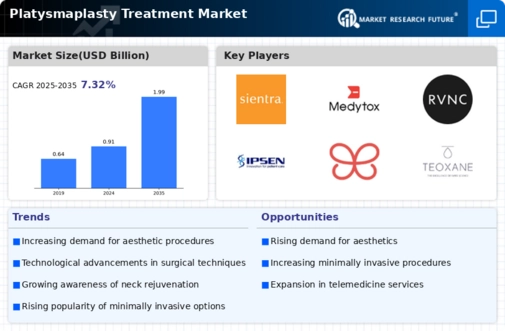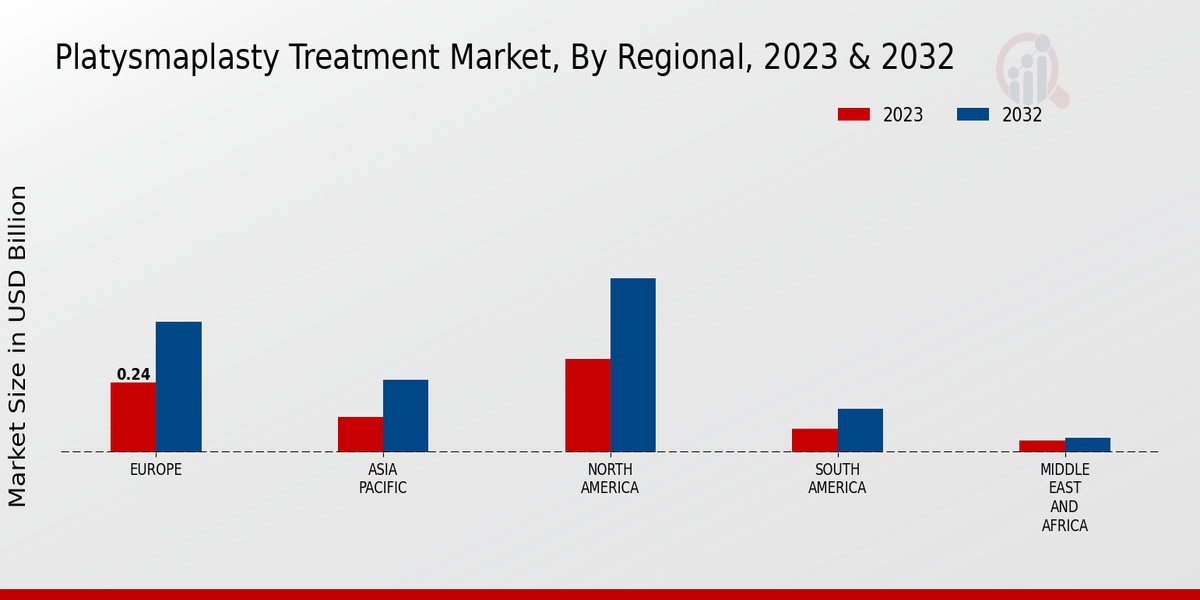Aging Population
The aging population is a significant driver of the Global Platysmaplasty Treatment Market Industry. As individuals age, they often experience sagging skin and muscle laxity in the neck area, prompting a desire for cosmetic interventions. This demographic trend is particularly pronounced in developed countries, where life expectancy is increasing. The demand for platysmaplasty is likely to rise as older adults seek to maintain a youthful appearance. With a compound annual growth rate (CAGR) of 7.35% projected for 2025-2035, the market is poised for substantial growth, reflecting the increasing willingness of older individuals to invest in aesthetic procedures.
Market Growth Projections
The Global Platysmaplasty Treatment Market Industry is projected to experience substantial growth over the coming years. With a market value expected to reach 0.91 USD Billion in 2024 and an anticipated increase to 1.99 USD Billion by 2035, the industry is on a promising trajectory. The compound annual growth rate (CAGR) of 7.35% from 2025 to 2035 indicates a robust expansion, driven by various factors such as technological advancements, rising aesthetic awareness, and an aging population. These projections suggest a dynamic market landscape, where the demand for platysmaplasty procedures is likely to flourish, reflecting broader trends in cosmetic surgery.
Rising Aesthetic Awareness
The Global Platysmaplasty Treatment Market Industry is experiencing growth driven by increasing aesthetic awareness among individuals. As people become more conscious of their appearance, particularly in the neck area, the demand for platysmaplasty procedures rises. This heightened awareness is often fueled by social media and celebrity culture, which promote ideals of beauty and youthfulness. In 2024, the market is projected to reach 0.91 USD Billion, reflecting a growing acceptance of cosmetic procedures. As aesthetic standards evolve, the industry anticipates a continued upward trajectory, with individuals seeking solutions to enhance their appearance and boost self-confidence.
Increased Disposable Income
Increased disposable income among consumers is contributing to the growth of the Global Platysmaplasty Treatment Market Industry. As economic conditions improve, individuals are more willing to allocate funds towards cosmetic procedures, including platysmaplasty. This trend is particularly evident in emerging markets, where rising middle-class populations are seeking aesthetic enhancements. The financial capability to afford such treatments is likely to drive demand, leading to a projected market value of 1.99 USD Billion by 2035. As disposable income continues to rise, the industry may see a broader acceptance of cosmetic surgery as a viable option for enhancing personal appearance.
Growing Influence of Social Media
The growing influence of social media is reshaping perceptions of beauty and driving demand in the Global Platysmaplasty Treatment Market Industry. Platforms such as Instagram and TikTok showcase aesthetic procedures, creating a culture where cosmetic enhancements are normalized and celebrated. This visibility encourages individuals to consider platysmaplasty as a means to achieve their desired look. The impact of social media on beauty standards is profound, leading to increased inquiries and consultations for cosmetic procedures. As the trend continues, the market is likely to expand, reflecting the changing attitudes towards cosmetic surgery in the digital age.
Technological Advancements in Surgical Techniques
Technological advancements play a crucial role in the expansion of the Global Platysmaplasty Treatment Market Industry. Innovations such as minimally invasive techniques and improved surgical instruments have made procedures safer and more effective. These advancements not only reduce recovery times but also enhance patient satisfaction, leading to increased adoption of platysmaplasty. As a result, the market is expected to grow significantly, with a projected value of 1.99 USD Billion by 2035. The integration of technology in cosmetic surgery continues to attract patients who seek effective solutions with minimal downtime, thereby driving the industry's growth.










